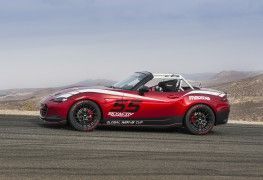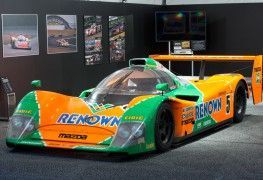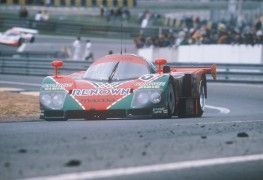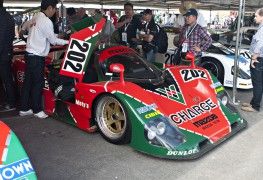In the late 1960s, Shin Kato, a Toyota engineer, had set up the "seventh engineering division of Toyota Motor Company", dedicated to creating racing cars. But the Japanese firm's exit from the world of racing left him composed and out of work, so he decided to rename his initiative under the name of Sigma Automotive and Racing. Sigma's idea was to create prototype sports cars in the style of the European Lola and Chevron. The name Sigma may not ring a bell, but if you put together the acronym (SAR) and add a D for Development you get SARD, and I think it's more likely that SARD, associated with a Toyota Supra, will ring a bell, right?
But let's go back to the seventies. Without Toyota's financial backing, Kato could choose whatever engine he wanted for his projects, and in 1972 he decided to go for a Mazda 12A rotary engine, taking advantage of its light weight and small size, to compete in the two-litre displacement category.
To source the engine, Kato turned to Mazda Auto Tokyo, the originator of Mada Speed. They prepared a 12A engine with 250 horsepower at 8,000 rpm and peripheral ports (although figures from other sources put it at 225 horsepower at 9,000 rpm, and we have not had a way to check the data with a third source beyond the two we have).
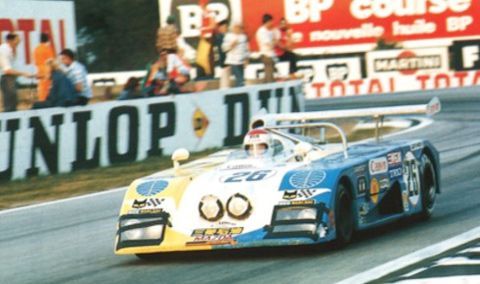
Sigma MC73 at Le Mans 1973
The chassis developed for the occasion was the MC73, an open two-seater entirely made in Japan and to be driven by an all-Japanese driver line-up as well, which caused a huge stir in the Land of the Rising Sun. After all, it was the first time that an all-Japanese team had taken part in the 24 Hours of Le Mans.
But the experiment didn't go so well. The car managed to qualify 14th in practice but abandoned after eleven hours of racing, with a burnt clutch.
The lessons learned would help Sigma to improve its offensive for 1974. Earlier in the month of November, Takayoshi Ohasi, the head of Mazda Speed, would sit down for a long talk with Kato about the Le Mans project. Both concluded that in order to achieve their goals of winning Le Mans and other international events, what they needed was a wealth of knowledge, so they travelled to France to meet with the ACO and request a sort of standing invitation to secure a place on the 24 Hours grid to build up experience and knowledge and hopefully win Le Mans.
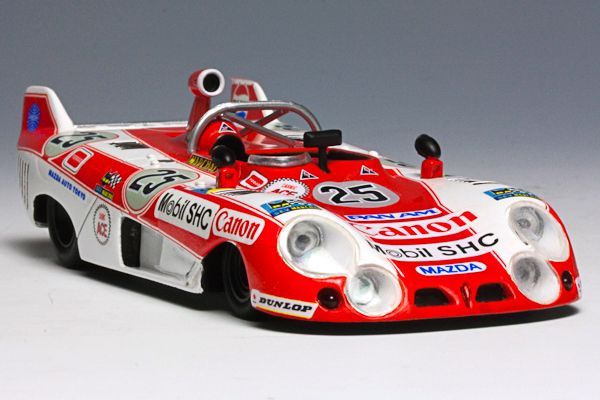
Model of the Sigma MC74 of Le Mans 1974
With this agreement, Sigma would prepare for 1974 an improved car, much more aerodynamic, the MC74. The car incorporated a 12A engine with peripheral ports again, but this time, despite numerous technical failures, tire blowouts and other problems of other kinds, managed to finish the race in 24th position, but failed to qualify, for not having covered the minimum distance to appear on the list of finalists.
The oil crisis and the lack of competitiveness of the SARD cars caused MazdaSpeed to disengage from the project to launch its own attack from 1979 with a series of "silhouette" cars.
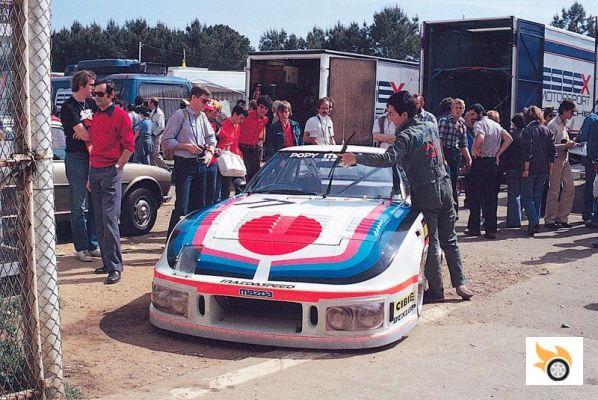
Mazda RX-7 252i
The first of these would be the RX-7 252i, a silhouette equipped with a 13B engine and indirect injection and dry sump lubrication, with 285 horsepower at 9,000 revs. The problem is that the 252, designed by Takuya Yura proved to be too slow, and failed to qualify for the start at Le Mans. Mazda, officially, was not involved in the project at the time, and MazdaSpeed decided to take 1980 as a sabbatical year to prepare a new racing car, also in silhouette, with which to take part in the race with guarantees.
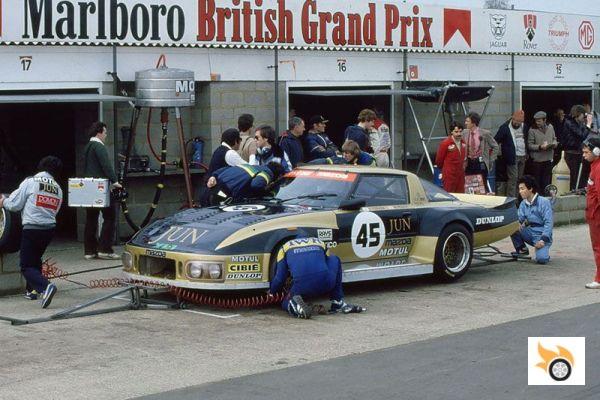
Mazda RX-7 253i sponsored by Jun
It would be the 253i. This car would receive technical support from TWR (which that year, remember, would win the 24 Hours of Spa with the near-stock RX-7 sponsored by Total), and Mazda France. The engine lost the mechanical injection system in favor of a pair of Weber carburetors capable of delivering 300 horsepower to the rear wheels (290 in spec to withstand the 24 Hour race).
Two 253i's were fitted, but both cars abandoned with mechanical problems (transmission failure) during the race, again. So the car mutated again for 1982, changing its name to 254i. The aerodynamics were improved to a Cx of 0.35, allowing the car to reach 277 per hour.
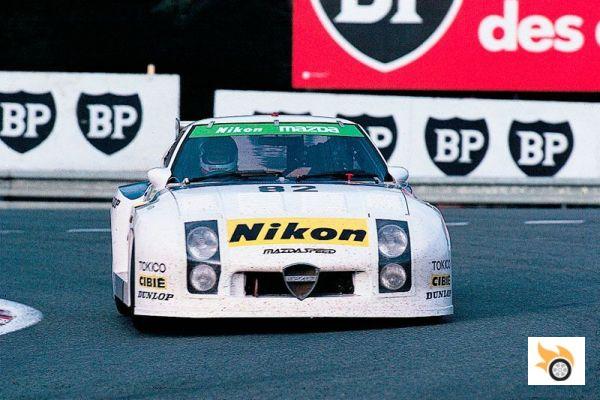
Mazda RX-7 254i
The IMSA GTO winning engine was imported for qualifying with Lucas injection, although in the race it was run with Weber carburettors. The ACO objected to using different engines for qualifying and the race, but when MazdaSpeed chartered a private plane to send two fuel injected race engines from Tokyo for the race starting on Saturday, the ACO changed their mind and allowed MazdaSpeed to race the carbureted version, which would eventually finish the race with a 50th place overall and a 14th place in class.
MazdaSpeed would then turn its project, now with the official support of the brand, towards the prototypes, where the series of cars developed by Mazda itself would start and would end up giving rise to the winning Mazda at the 24 Hours of Le Mans. But that's for the next installment.
A tribute to Mazda and its sporting and technological heritage
